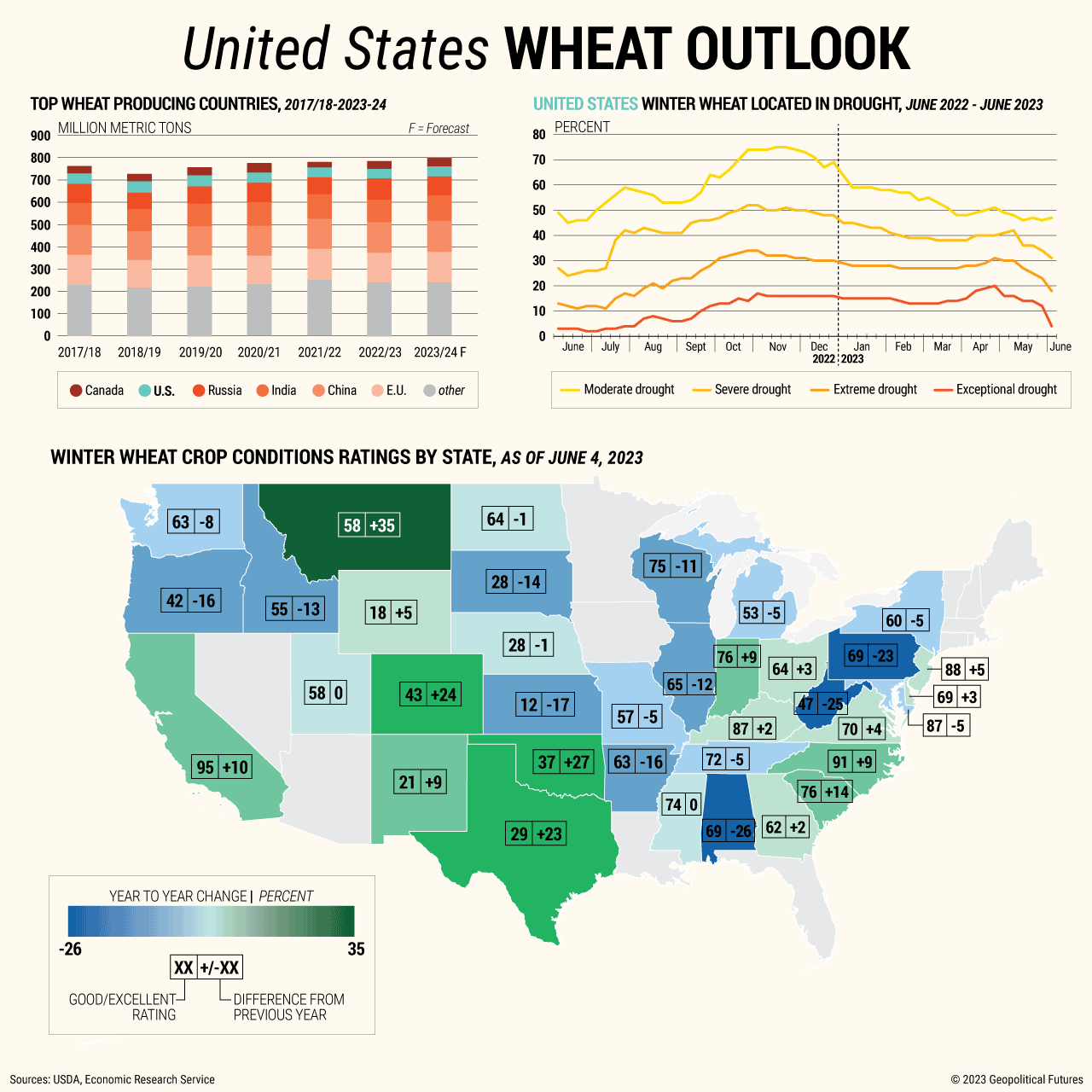Just over one-third of the U.S. winter wheat crop is in good to excellent condition, while another third is set to be abandoned due to persistent drought conditions, according to the latest figures from the U.S. Department of Agriculture. Approximately half of all winter wheat crops across the nation are grappling with varying degrees of drought stress. However, it is worth noting that this represents a significant improvement from the alarming 75 percent recorded at the outset of the season seven months ago. Consecutive years of lackluster wheat crop performance have triggered a substantial rise in U.S. wheat imports, surging by 31 percent to reach 125 million bushels this season. This surge is aimed at bolstering local mills and ensuring a steady supply of wheat. The ramifications of this situation extend beyond the fields, putting the livelihoods of farmers and related jobs at risk, particularly in the Midwest region.
Although the United States plays a pivotal role as a major contributor to global wheat exports, the impact on the overall global wheat supply is expected to be relatively limited. The European Union has experienced a robust winter wheat crop, driven primarily by the exceptional performance in France, Germany, Hungary, Italy and Spain. Furthermore, both Russian and Ukrainian wheat crops have fared well despite the ongoing war. Current projections indicate that the global wheat supply will be sufficient to meet growing consumption, increased trade volume and expanded ending stocks. However, markets may face logistical challenges as they navigate the wheat landscape.





